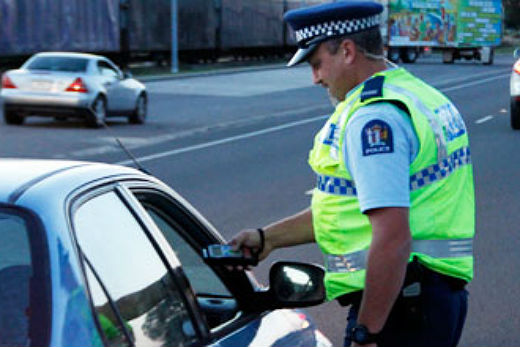More than 2300 attempts to drink and drive have been prevented by alcohol interlocks since they were introduced in New Zealand.
Alcohol interlocks are similar to an in-car breathalyser and became a sentencing option in the courts for drink drivers in 2012.
Interlock devices are used to stop prolific drink drivers. Photo: File.
The latest issue of AA Directions magazine has investigated how well interlocks are working and figures show that as at May this year, there had been 2369 attempts by people with an interlock in their vehicle to drive with alcohol in their system.
The devices prevented the vehicles from starting.
'If not for interlocks there would have been thousands of times that a drunk driver was back out on the road putting lives at risk,” says AA motoring affairs general manager Mike Noon.
The article also reveals that, unfortunately, only a tiny fraction of drink drivers are being sentenced to the devices.
An AA research report found that in the first year interlocks were available, nearly 12,000 repeat or high-level drink drivers could have been sentenced to have to use one.
But of those near 12,000, barely 200 drink drivers were sentenced to an interlock.
'In May there were just 270 interlocks in use in New Zealand. That number is embarrassingly small,” says Mike.
'If we are serious about reducing the number of crashes involving alcohol then we need to be using interlocks much, much more.”
A government review of the penalties for drink driving is currently underway and the AA wants all repeat and high-level first time drink drivers to be sentenced to an alcohol interlock.
'We also want interlocks to be combined with more assessment and treatment of drink divers who have alcohol issues,” adds Mike.
'Most drink drivers right now are given a fine and have their licence suspended but, without an interlock, there is nothing physically stopping them from getting back behind the wheel after drinking.
'Interlocks have reduced drink-driving reoffending by up to 90 per cent in other countries and are the most effective weapon we have against drink-driving.
'The problem is we are leaving them sitting in the holster.”



4 comments
Overit
Posted on 15-07-2015 12:22 | By overit
Um who pays for these devices? Is it taxpayers money again for useless people who think they are above the Law and can do what they want.
@ overit
Posted on 15-07-2015 13:23 | By tabatha
This is one use of taxpayers money I would not grizzle about. I would like to think the person who drinks has to pay for it. I am not a drinker or alcoholic, but from work I have done know that alcoholism is a disease and like many diseases we have someone like the government pays. I would rather have the drinking person not driving then taking the risk they could drive if no lock installed in their car.
user pays
Posted on 15-07-2015 23:41 | By Primed
once convicted the driver pays to have the device installed and then continues paying a hireage so to speak. They can only drive a vehicle installed with this device or that is an offence aswell.
Complacent NZ
Posted on 16-07-2015 05:37 | By s83cruiser
What the hell is wrong with this country and is court system?? There is a device available to the courts to help prevent this type of offender reoffending and it's not being used. If the cost of the devise is an issue MAKE THE USER PAY for it as part of their punishment for the original drink drive conviction. Getting drunk is a self inflicted injury and so should be the cost of the devise to stop them being a problem again. If they can afford the booze they can afford the devise. The Judicial system in this country need a good kick in the pants. ANY drink driving conviction should require one of these devises in the offenders car regardless, surely this isn't a hard concept to grasp.
Leave a Comment
You must be logged in to make a comment.